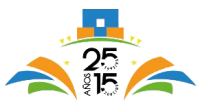| ABSTRACT |
Dynamic PET images suffer from low signaltonoise ratio (SNR), especially for fast contrast uptake measurements due to the small number of counts available in those time frames. In this work, we propose a 4D reconstruction method based on spatiotemporal total variation (STTV) which takes advantage of image redundancies in 4D. The 4D STTV method was efficiently implemented using the Split Bregman formulation, which has been shown to be optimal for decreasing noise while maintaining image quality. To evaluate the proposed approach we acquired listmode data from a NEMA image quality phantom in a preclinical PET/CT scanner.
Dynamic data sets of decreasing SNR (using one half, one quarter and one octave of the total counts) were created and then reconstructed with both STTV and 2DOSEM algorithms. Our proposed 4D reconstruction led to major improvements in terms of image SNR and spatial resolution (measured in terms of recovery coefficients) for all the dynamic datasets evaluated. Decreasing the number of counts by a factor of 8 in the data led to a 120% increment in the noise of the images reconstructed with 2D OSEM, while the proposed approach was able to preserve the noise in all the cases. We have proposed and preliminary validated a 4D PET reconstruction based on STTV. Results suggest that this approach holds the potential to provide significant improvements in image quality for dynamic PET imaging, although further studies using invivo data are required.
|




